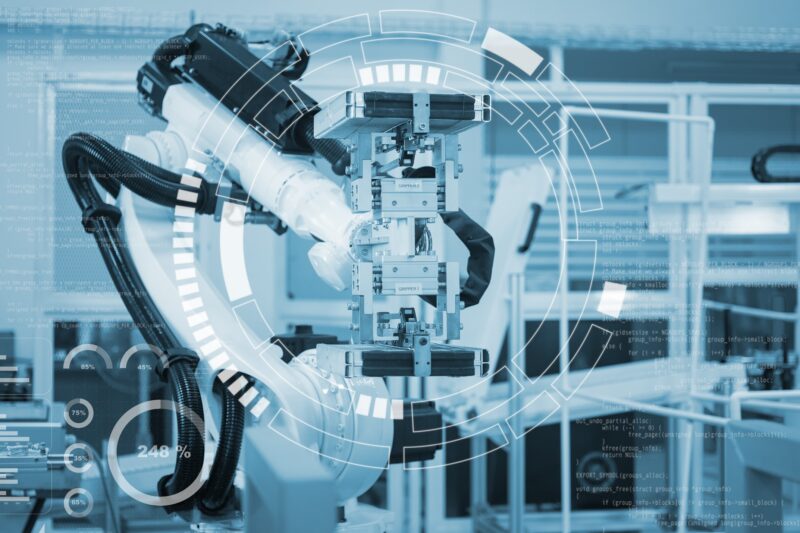Toppe Consulting – Your Source for Digital News & Trends in the Legal Industry
Nearly half of manufacturers cite data protection concerns as a major factor impacting their AI adoption decisions, according to Microsoft’s 2025 Manufacturing Signals Report. This isn’t mere corporate paranoia—it reflects the harsh reality that connected factories create unprecedented vulnerabilities where intellectual property theft, ransomware attacks, and regulatory compliance failures can devastate companies already operating on razor-thin margins.
The security dilemma facing manufacturers differs fundamentally from cybersecurity challenges in other industries. Manufacturing facilities don’t just store sensitive data—they operate physical systems where cyber intrusions can halt production lines, damage equipment, or compromise product quality. When AI systems control critical processes, the attack surface expands exponentially while the potential consequences grow more severe.
Consider what’s actually at stake. Manufacturing facilities house proprietary designs, production methodologies, supplier relationships, and customer data that competitors would pay millions to access. A single breach can expose trade secrets developed over decades, giving rivals instant advantages that eliminate competitive differentiation. For Southeast manufacturers competing against lower-cost international producers, intellectual property often represents their primary competitive advantage—making its protection existential rather than merely important.
The October 2025 manufacturing contraction—the eighth consecutive month with PMI below 50% according to the Institute for Supply Management—intensifies these security concerns. Companies already struggling with profitability can’t afford the financial impact of data breaches, which average millions in direct costs plus immeasurable damage to customer relationships and market position. As examined in Why 80% of Manufacturers Are Racing to Adopt AI—And Why Half Will Fail, this creates impossible choices between competitive necessity and operational risk.
AI adoption amplifies these vulnerabilities in specific ways. Connected sensors feeding data to AI systems create network entry points that didn’t exist in traditional manufacturing environments. Cloud-based AI platforms require transmitting sensitive production data outside company firewalls. Machine learning models themselves can become targets, with adversaries poisoning training data or reverse-engineering proprietary algorithms through careful observation of system behavior.
The regulatory landscape compounds compliance complexity. Manufacturers operating across multiple states navigate different data protection requirements while also satisfying customer-mandated security standards that may exceed legal minimums. Defense contractors face NIST cybersecurity framework requirements. Medical device manufacturers must comply with FDA guidelines. Automotive suppliers answer to OEM security audits. Each additional AI system increases the compliance burden while creating new audit vulnerabilities.
Smaller manufacturers face disproportionate challenges. Large corporations employ dedicated cybersecurity teams and can afford enterprise-grade security infrastructure. Middle-market manufacturers competing for the same customers must meet similar security standards with a fraction of the resources. This disparity helps explain why firms with 51+ employees show 39% AI adoption rates while smaller manufacturers hover around 20%—security concerns limit what smaller operations can safely implement.
The skills gap explored in The $1 Trillion Skills Gap: How AI Automation Is Widening Manufacturing’s Workforce Crisis directly impacts security postures. Manufacturers struggling to find workers who can operate AI systems face even greater difficulty recruiting cybersecurity professionals who understand both IT security and operational technology vulnerabilities specific to manufacturing environments. This specialized expertise commands premium wages that many manufacturers can’t afford.
Some manufacturers respond by avoiding connected systems entirely, keeping AI implementations air-gapped from broader networks. This approach sacrifices much of AI’s potential value—real-time optimization, predictive maintenance, and supply chain integration all require connectivity. Other companies implement security through obscurity, assuming their small size makes them unattractive targets. This proves dangerously naive as automated attack tools make company size irrelevant to cybercriminals seeking any vulnerable entry point.
Successful approaches balance security with operational necessity. Manufacturers implement network segmentation that isolates critical production systems while allowing controlled data flows to AI platforms. They deploy continuous monitoring that detects anomalous behavior indicating potential intrusions. They establish incident response protocols tested through regular drills. Most importantly, they build security considerations into technology decisions from the beginning rather than bolting protection onto vulnerable systems after deployment.
The insurance dimension adds another complexity layer. Cyber insurance premiums have skyrocketed as insurers reassess manufacturing risks, with many policies now excluding certain attack types or requiring extensive security controls before providing coverage. Manufacturers face difficult calculations about whether premium costs justify coverage benefits, especially when policies may not cover business interruption losses or intellectual property theft—often the most damaging breach consequences.
The path forward requires acknowledging that perfect security remains impossible while accepting that inadequate security proves fatal. Manufacturers must treat cybersecurity as a competitive requirement rather than a cost center, investing appropriately while accepting measured risks. Those unable or unwilling to make necessary investments face stark choices about limiting AI adoption—potentially ceding competitive ground to better-resourced rivals who successfully navigate these challenges.
Toppe Consulting: Your Partner in Digital Growth
Toppe Consulting specializes in helping businesses navigate digital transformation through strategic marketing solutions. Our services include:
- Website Development – Professional websites that drive results
- Digital Marketing Strategy – SEO, Google Ads, social media, and comprehensive online presence management
Ready to Strengthen Your Digital Presence? Contact Toppe Consulting to discuss how we can help your business thrive in today’s competitive landscape.
About the Author
Jim Toppe is the founder of Toppe Consulting, a digital marketing agency specializing in law firms. He holds a Master of Science in Management from Clemson University and teaches Business Law at Greenville Technical College. Jim also serves as publisher and editor for South Carolina Manufacturing, a digital magazine. His unique background combines legal knowledge with digital marketing expertise to help attorneys grow their practices through compliant, results-driven strategies.
Works Cited
“NIST Cybersecurity Framework.” National Institute of Standards and Technology, U.S. Department of Commerce, www.nist.gov/cyberframework. Accessed 7 Nov. 2025.




